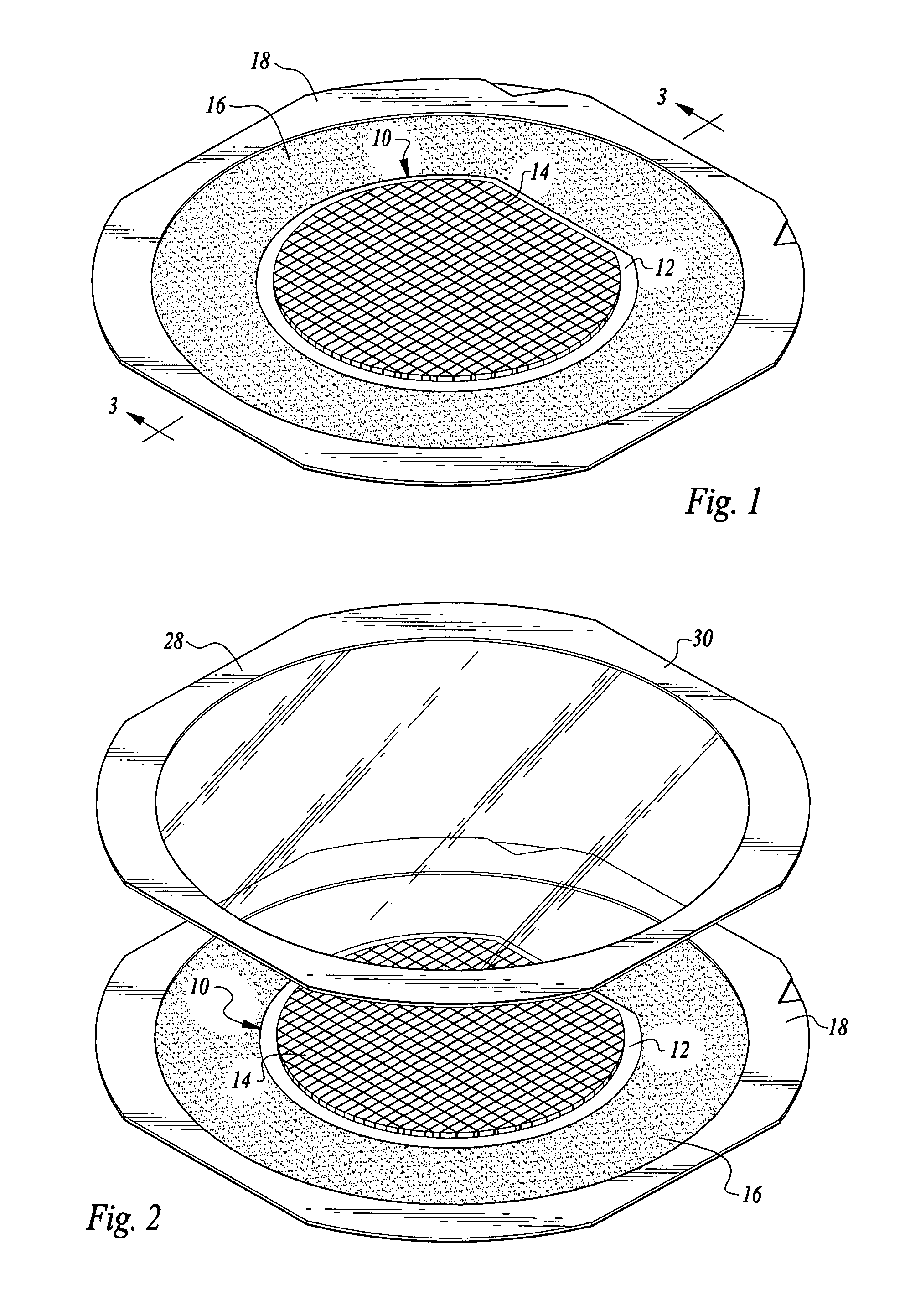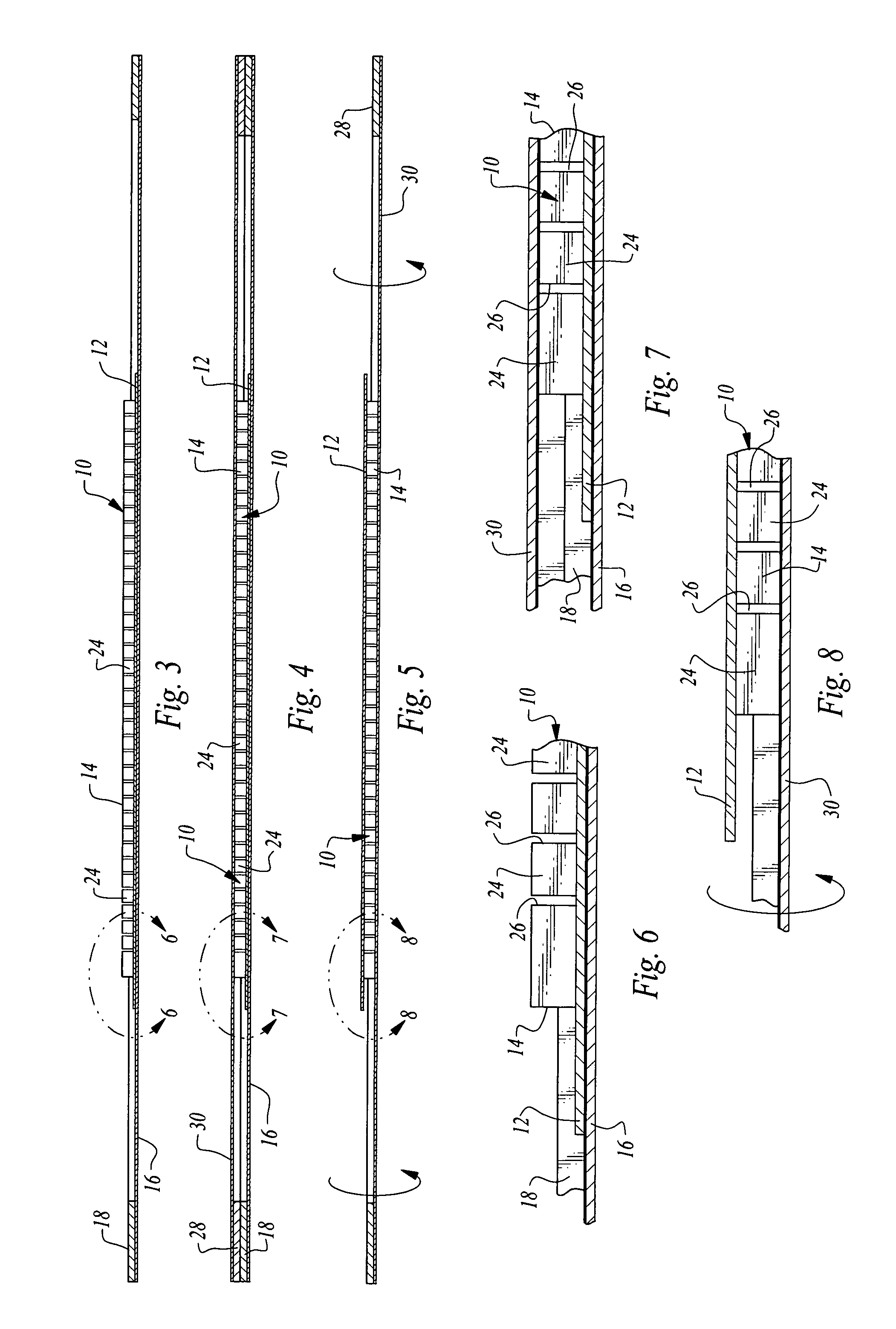Method of removing back metal from an etched semiconductor scribe street
- Summary
- Abstract
- Description
- Claims
- Application Information
AI Technical Summary
Benefits of technology
Problems solved by technology
Method used
Image
Examples
Embodiment Construction
[0027]Referring now to the drawings, a semiconductor wafer 10 is illustrated, the wafer having a metal layer or base 12 and a semiconductor material layer 14. The semiconductor material layer 14 of the wafer shown in FIGS. 1-8 has been etched along scribe streets to form individual semiconductor material dies but leaving the metal layer 12 intact, even in the scribe streets.
[0028]A commercially available etching machine of any suitable type may be employed to etch the semiconductor material to remove semiconductor material in the scribe streets but leaving the metal unetched. That is, the etching process illustrated in FIG. 11 is continued in the normal fashion until the metal layer on the back side of the wafer is reached. U.S. Pat. No. 6,826,840, Lindsey, et al. discloses an apparatus that has the ability to align scribe streets with the direction of travel of a cutting tool, the ability to move a cutting tool rapidly the length of the scribe streets, and the ability to step preci...
PUM
 Login to View More
Login to View More Abstract
Description
Claims
Application Information
 Login to View More
Login to View More - R&D
- Intellectual Property
- Life Sciences
- Materials
- Tech Scout
- Unparalleled Data Quality
- Higher Quality Content
- 60% Fewer Hallucinations
Browse by: Latest US Patents, China's latest patents, Technical Efficacy Thesaurus, Application Domain, Technology Topic, Popular Technical Reports.
© 2025 PatSnap. All rights reserved.Legal|Privacy policy|Modern Slavery Act Transparency Statement|Sitemap|About US| Contact US: help@patsnap.com



